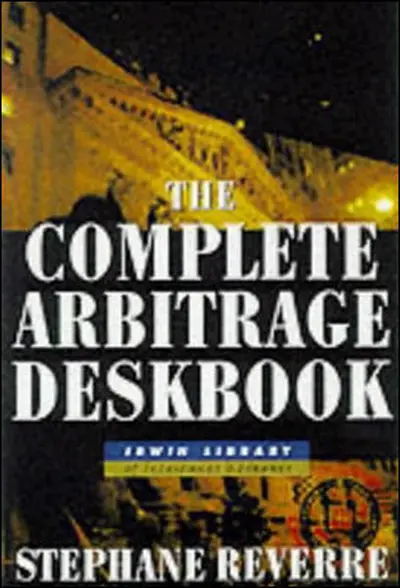My Account Details

ISBN10: 0071359958 | ISBN13: 9780071359955

Step 1 . Download Adobe Digital Editions to your PC or Mac desktop/laptop.
Step 2. Register and authorize your Adobe ID (optional). To access your eBook on multiple devices, first create an Adobe ID at account.adobe.com. Then, open Adobe Digital Editions, go to the Help menu, and select "Authorize Computer" to link your Adobe ID.
Step 3. Open Your eBook. Use Adobe Digital Editions to open the file. If the eBook doesn’t open, contact customer service for assistance.
The Complete Arbitrage Deskbook explains every aspect of the types, instruments, trading practices, and opportunities of modern equity arbitrage. It travels beyond U.S. borders to examine the worldwide opportunities inherent in arbitrage activities and demonstrates how to understand and practice equity arbitrage in the global professional environment. Written specifically for traders, risk managers, brokers, regulators, and anyone looking for a comprehensive overview of the field of equity arbitrage, this groundbreaking reference provides: Details of the financial instruments used in equity arbitrage—stocks, futures, money markets, and indices Explanations of financial valuation and risk analysis, tailored to the characteristics of the underlying position and market environment Examples of actual arbitrage situations—presenting a real-life snapshot of equity arbitrage in actionThe Complete Arbitrage Deskbook is the only book to combine operational details with practical analysis of modern equity arbitrage. Concise in explanation yet comprehensive in scope, it provides an integrated overview of both the practices and the possibilities of the modern equity arbitrage marketplace.
Part I: Theory and Tools. Chapter 1: Introduction. Chapter 2: Stocks. Chapter 3: Futures and Related Instruments. Chapter 4: Money Markets. Chapter 5: Aggregate Indicators: Stock Indices. Part II: Financial Valuation and Risk Analysis. Chapter 6: Valuations. Chapter 7: Risk Analysis. Part III: Common Arbitrage Situations. Chapter 8: Index Arbitrage. Chapter 9: Risk Arbitrage. Chapter 10: Pair Trading and Technical Trading.
Chapter 2: Stocks. Chapter 3: Futures and Related Instruments. Chapter 4: Money Markets. Chapter 5: Aggregate Indicators: Stock Indices. Part II: Financial Valuation and Risk Analysis. Chapter 6: Valuations. Chapter 7: Risk Analysis. Part III: Common Arbitrage Situations. Chapter 8: Index Arbitrage. Chapter 9: Risk Arbitrage. Chapter 10: Pair Trading and Technical Trading.
Chapter 4: Money Markets. Chapter 5: Aggregate Indicators: Stock Indices. Part II: Financial Valuation and Risk Analysis. Chapter 6: Valuations. Chapter 7: Risk Analysis. Part III: Common Arbitrage Situations. Chapter 8: Index Arbitrage. Chapter 9: Risk Arbitrage. Chapter 10: Pair Trading and Technical Trading.
Part II: Financial Valuation and Risk Analysis. Chapter 6: Valuations. Chapter 7: Risk Analysis. Part III: Common Arbitrage Situations. Chapter 8: Index Arbitrage. Chapter 9: Risk Arbitrage. Chapter 10: Pair Trading and Technical Trading.
Chapter 7: Risk Analysis. Part III: Common Arbitrage Situations. Chapter 8: Index Arbitrage. Chapter 9: Risk Arbitrage. Chapter 10: Pair Trading and Technical Trading.
Chapter 8: Index Arbitrage. Chapter 9: Risk Arbitrage. Chapter 10: Pair Trading and Technical Trading.
Chapter 10: Pair Trading and Technical Trading.
Need support? We're here to help - Get real-world support and resources every step of the way.